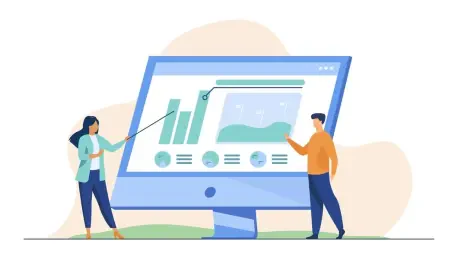Unveiling the Power of Personalization in Today’s Market
Imagine a world where every interaction with a brand feels uniquely crafted for the individual—where a streaming service predicts the exact show to binge, or an online retailer suggests a product before the need is even realized. In 2025, this is no longer a distant vision but a stark reality driving business success across industries. Personalization, the art of tailoring experiences to individual preferences through data and technology, has become a defining factor in market competition. This analysis explores the current state of personalization, delving into its transformative impact on consumer behavior and business performance. The purpose is to provide a comprehensive market overview, highlighting key trends, data-driven insights, and strategic implications for companies navigating this dynamic landscape. As consumer expectations soar and technology advances, understanding personalization’s role is critical for any business aiming to maintain relevance and drive growth in today’s hyper-connected economy.
Market Dynamics: Current Trends and Data Insights
Consumer Demand as a Catalyst for Personalized Experiences
In the current market, consumer demand for personalized interactions stands as a primary driver reshaping business strategies. Data reveals that 80% of consumers are more likely to purchase from brands that offer tailored experiences, while 86% admit personalization significantly influences their buying decisions. This expectation transcends mere product recommendations, encompassing diverse aspects such as attentive service, customized discounts, and seamless convenience. The frustration is palpable when personalization falls short—74% of consumers express irritation with irrelevant content, often leading to a swift shift to competitors. This trend underscores a market where relevance equates to retention, pushing companies to prioritize individualized engagement over generic outreach.
Moreover, the stakes are higher in specific sectors like e-commerce, where 47% of shoppers defect to larger platforms if personalization is lacking. Beyond immediate sales, tailored experiences foster loyalty, with 44% of online shoppers becoming repeat buyers when interactions feel customized. This consumer-driven pressure creates a clear market signal: businesses must adapt to nuanced expectations or risk losing ground. The challenge lies in delivering authenticity without overstepping privacy boundaries, as a notable segment remains wary of data overuse in personalization efforts.
Technology’s Role in Scaling Market-Wide Personalization
Technology, particularly artificial intelligence (AI), has emerged as a cornerstone in meeting the market’s personalization demands at scale. Presently, 92% of businesses leverage AI to automate tailored content, customer journey mapping, and real-time interactions. This technological integration enables precision that manual efforts could never achieve, allowing brands to process vast datasets for deeper consumer insights. For instance, streaming platforms curate playlists with uncanny accuracy, enhancing user engagement through machine learning algorithms.
Despite widespread adoption, only 17% of marketing executives fully utilize AI’s capabilities, even though 84% recognize its potential to redefine strategies. Barriers such as technical expertise and budget constraints hinder broader implementation, creating a disparity in market readiness. As technology continues to evolve, companies that bridge this gap stand to gain a significant edge, transforming personalization from a niche tactic into a pervasive market standard. The trajectory suggests an increasing reliance on hybrid models, blending AI precision with human oversight to ensure relevance and emotional resonance.
Sector-Specific Market Patterns and Performance Metrics
Across different market sectors, personalization manifests unique patterns, challenges, and opportunities. In e-commerce, tailored recommendations drive 31% of revenue, with 56% of shoppers returning to platforms that personalize their experience. Yet, a persistent 31% of consumers crave even more customization, indicating untapped potential in areas like dynamic pricing. This sector’s reliance on immediate, visible outcomes positions it as a leader in personalization adoption, though competition remains fierce.
In contrast, the B2B market focuses on systemic data integration, with 72% of firms collecting behavioral insights and 67% unifying data across platforms. Implementation challenges plague 40% of these companies, often due to complex sales cycles and fragmented systems. Meanwhile, retail faces intense consumer scrutiny—79% of companies invest in personalization technology, but 91% of shoppers abandon after subpar experiences. These sector-specific dynamics reveal a market where personalization’s impact is universal yet varied, demanding tailored strategies to address distinct operational realities and customer expectations.
Future Projections: Personalization’s Market Evolution
Investment Growth and Economic Indicators
Looking at current investment trends, the personalization software market is a robust indicator of future growth, valued at a significant scale with projections to expand further by 2027. Marketers allocate 40% of their budgets to personalization initiatives, a clear sign of strategic prioritization. Additionally, 63% plan to increase hyper-personalization budgets, reflecting confidence in its role as a competitive differentiator. This financial commitment underscores a market poised for expansion, driven by the proven correlation between tailored experiences and enhanced business metrics.
Economic factors, such as rising competition and digital transformation, further fuel this growth. Companies across sectors recognize that differentiation through personalization is not just advantageous but essential in crowded markets. However, regulatory changes around data privacy pose potential constraints, requiring businesses to balance innovation with compliance. The market’s direction points to a landscape where investment in personalization will intensify, shaping economic strategies and operational frameworks for years to come.
Emerging Innovations and Consumer Shifts
Beyond investment, emerging innovations are set to redefine personalization’s market presence. Advances in machine learning enable predictive engagement, allowing brands to anticipate consumer needs with greater accuracy—think grocery apps suggesting meal plans based on purchase history. Augmented reality also holds promise, offering immersive, tailored experiences that deepen customer connections. These technological leaps are matched by shifting consumer behaviors, particularly among younger demographics who expect brands to proactively address their preferences.
Data suggests that 51% of younger consumers already demand anticipatory personalization, a trend likely to grow as digital natives dominate market share. This shift pressures companies to move beyond reactive strategies toward predictive models, leveraging real-time data for seamless interactions. As these innovations gain traction, the market will likely see a surge in demand for platforms that integrate cutting-edge tools with user-centric design, setting new benchmarks for engagement and satisfaction.
Reflecting on Market Insights and Strategic Pathways
Looking back, this market analysis delved into personalization’s profound influence on business landscapes in 2025, revealing how consumer demand and technological advancements shaped a competitive environment where tailored experiences drove loyalty and revenue. The examination of sector-specific impacts highlighted e-commerce’s revenue gains, B2B’s data challenges, and retail’s high-stakes customer retention, painting a picture of a market united by personalization’s potential yet divided by execution maturity. Investment trends and emerging innovations further underscored a trajectory of growth tempered by regulatory and operational hurdles.
Moving forward, businesses should focus on actionable steps to harness personalization’s benefits. Prioritizing data unification ensures consistent experiences across touchpoints, a critical move for sectors like B2B where fragmented systems hinder progress. Incremental adoption of AI, even in resource-constrained environments, can yield scalable results, while transparent data practices build consumer trust amid privacy concerns. Retailers might consider enhancing post-purchase engagement with tailored follow-ups, and e-commerce platforms could explore predictive pricing models to capture untapped demand. As the market evolves, aligning strategies with consumer expectations and technological capabilities will be paramount, ensuring that personalization remains a sustainable driver of growth and differentiation in an ever-shifting economic landscape.









